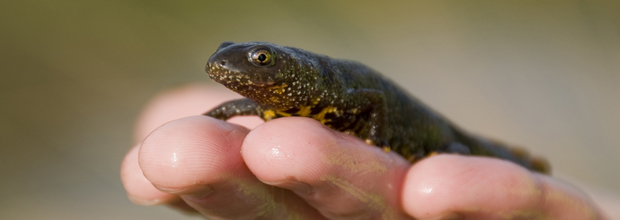One of life’s treats for me is to settle down with a cup of coffee (or two) and read The Sunday Times. The process starts by throwing away all the bits we don’t read, then finding out about the latest cars and gadgets and then onto the sport and then business. I reach the news later in the day and so by that time I am very relaxed.
I was rudely roused from my relaxed state a couple of Sundays ago by an article that attributed all losses in UK amphibian life over the last few decades to pesticides. It quoted research sources that were said to have proved this state of affairs. The pesticides mentioned were atrazine, DDT, dieldrin and malathion.
My immediate reaction was that no other possible causes of losses of amphibians were mentioned, perhaps loss of habitat or other possible toxins. This seemed an extraordinary oversight in light of the fact that the pesticides mentioned have not been used in the UK for years.
It is now clear that the bold accusations were made by an anti-pesticide group and not the researchers themselves whose methods appear not to reflect the type of exposure that would occur outside the laboratory. I’m rather disappointed that a quality newspaper acted as a mouthpiece for this group rather than investigating more thoroughly the facts.
Since the article was published, I’ve been thinking a little more about my immediate reaction to it. I remember saying to my wife that the article was ill-founded because the pesticides had already been withdrawn because of fears over their safety in the environment. However, perhaps this makes me a bit of a hypocrite because I may have lamented and, at least subconsciously, defended these pesticides when they were first threatened with revocation. I realise that it is difficult to defend DDT and dieldrin, but please remember that DDT is still being used in a very targeted way to fight malaria (see my April 2013 blog ‘The Impatient Optimist’).
The new EU pesticide regulations have further increased the standards of environmental protection, particularly for aquatic life. I blogged only a couple of weeks ago about wider aquatic buffer zones (‘Two in one will go’). The issue of endocrine disruptors is also coming to a head and it’s hard to imagine that there will not be further losses of active ingredients as a result.
As standards increase the reasons for revocation become more marginal. Preventing the widespread use of DDT and dieldrin was perhaps an easy decision compared to the possible withdrawal of active ingredients due to the hazard (not the risk) posed to endocrine disruption. So getting the correct balance between food production and any threat that may exist to environmental and human health will become more challenging.
It’s also getting harder to achieve the right balance when there are single issue groups who are hell bent on getting their own way. To achieve this, truth and scientific facts become the first casualties. I suppose the prime example of this is Greenpeace’s campaign against GM Golden Rice (see January 2013 blog ‘A golden future’), the cultivation of which may prevent widespread disability and death amongst children.
Fortunately, we’ve continued to produce the same amount of food despite all the pesticide withdrawals which we’ve seen over recent years. Unfortunately, this may have given the impression that food production will continue to be maintained despite even further pesticide withdrawals. However, there are many of us in the industry who now feel that we cannot suffer more losses of pesticides without a significant fall in production. Hence, I sympathise with those at the sharp end of decision making on pesticide approvals. They’re trying to achieve the right balance between food production and the environment, which is of course a political as well as a scientific issue.
Politicians are becoming increasingly aware of the challenges to future food supplies and they also seem more aware that NGOs and single issue groups may not be as righteous as they themselves think they are. It is my firm belief that the debate on achieving the right balance between food production and the environment will be heightened as food supplies get tighter resulting in more votes being swayed by food availability and prices.
